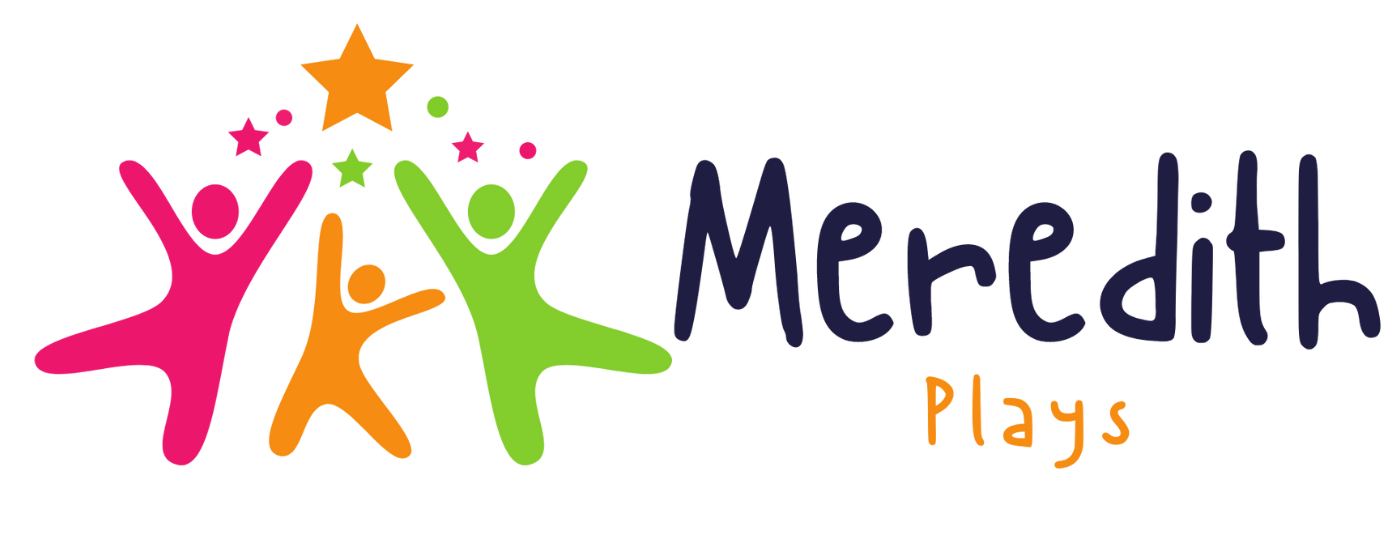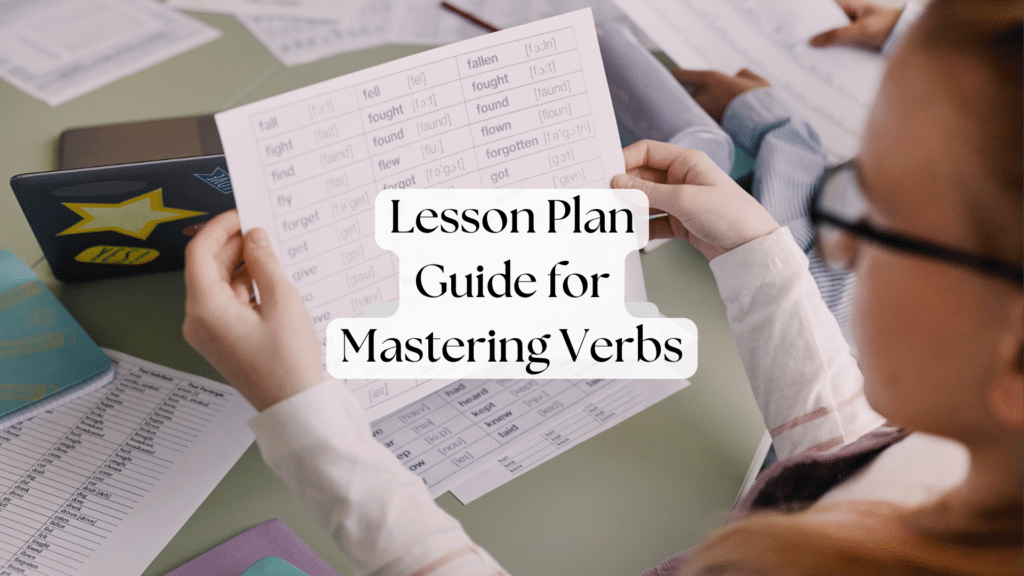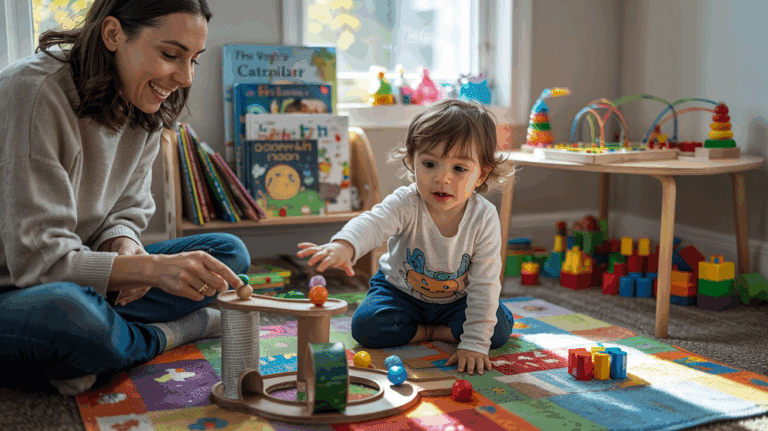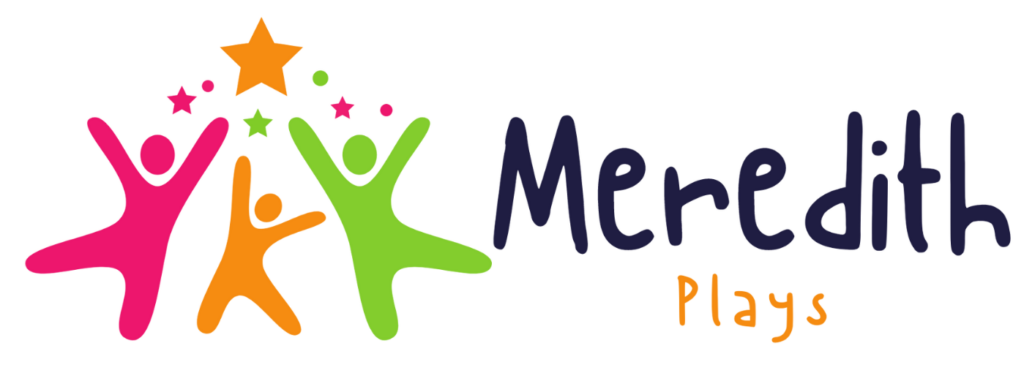Verbs are the heart of every sentence. In this article, you’ll learn how to teach them with ease. I’ll cover different verb types, lesson ideas, and game suggestions.
By the end, you’ll know exactly how to engage your students and improve their skills. You can trust this guide because it’s tried, tested, and backed by real teaching experience.
If you’re searching for simple steps to plan effective verb lessons, you’ve come to the right place. Here’s what you’ll find:
- Clear tips on teaching verbs
- Examples of regular and irregular verbs
- Activities that boost learning
Let’s move forward together to make your classroom more confident and lively. This blog covers everything you need to plan your next lesson easily and clearly.
Keep reading to see how these strategies fit your teaching style.
Introduction to Verbs

Verbs are words that bring life to a sentence. If you remove them, your sentence stands still. I want you to see how they’re the backbone of communication.
(Yes, they matter a lot.)
When you say “I run,” or “You sing,” the verb shows the action. Without it, we lose the sense of movement or being.
They are essential because they help you share what’s happening, who is involved, and when it occurs. Verbs tie all sentence parts together, turning simple words into clear thoughts.
Focus on these points:
- Verbs show action (run, jump, dance).
- Verbs can show being (am, are, is).
- Verbs link the subject to extra details.
Classifying Verb Types
Verbs are words that show action or state of being, and they come in several types. Understanding these different verb types helps writers create clearer sentences and more precise meaning.
I want you to see how verbs can be sorted into three main groups. (Yes, it’s that simple.)
Main Verbs
These verbs stand-alone and show the main action or state of being. Examples are run, eat, think, and play. They carry the central meaning in a sentence.
Helping Verbs
These verbs support a main verb by adding tense, mood, or voice. Common helping verbs include am, is, are, was, were, have, has, had, will, can, should, and could.
For instance, in “I am running,” the word “am” is a helping verb that works with “running.”
Linking Verbs
These verbs do not show action but link the subject to other information. Think of words like am, is, are, was, were, appear, become, and seem. For example, in “You are kind,” “are” links “you” with “kind.”
Remember: main verbs stand independently, helping verbs give support, and linking verbs connect ideas. This clear breakdown helps your students spot each type with ease.
Once you and I see these groups, we can use them to form stronger sentences. You can show your students these sets of verbs in real examples.
Teaching Regular and Irregular Verbs
Verbs follow patterns when changing tense, but not all verbs follow the same rules. Showing students the difference between regular and irregular verbs helps them speak and write correctly.
Key Differences
| Verb Type | Pattern | Examples |
|---|---|---|
| Regular Verbs | Follow a clear pattern. You usually add -ed for the past tense. |
walk → walked talk → talked play → played |
| Irregular Verbs | Their forms change in ways we don’t always expect. |
go → went see → saw eat → ate |
Simple Strategies
- Make small lists. Choose a few irregular verbs at a time. Teach each one until it becomes familiar.
- Use visuals. Show charts or flashcards with present, past, and past participle forms.
- Say them out loud. Repetition helps. Have students speak each form in class.
- Compare side by side. Show a regular verb next to an irregular one. Point out the spelling changes.
That’s it. By using short, focused lessons, you make these verbs easier to remember. I suggest going over a few verbs each day.
You’ll help your students grow more comfortable with verb forms. Over time, their writing and speaking will become smoother and more accurate.
Using Modal Verbs
Modal verbs help express necessity, possibility, permission, or ability. These helper verbs give extra meaning to the main verbs they accompany.
Teaching students how to use modal verbs correctly improves both their writing and speaking skills.
Common Modals
- They add meaning to the main verb.
- They show possibility, ability, or necessity.
- Like can, could, may, might, must, should, will, etc.
Real-World Use
- Practice with role-play: “Can I go now?” or “You should clean your room.”
- Use real examples: “Could you pass the salt?” or “We must finish this project.”
- Ask for predictions: “Will it rain tomorrow?”
Modals make sentences more polite, clear, or urgent. Keep these words handy, and your students will build stronger conversations.
Classroom Activities for Verb Practice
I want you to see how active tasks can make verb lessons more lively. It helps students stay alert and ready to learn. When you group them together, they share ideas and improve faster.
I believe in hands-on projects because they bring words to life. Repetition cements these skills in their minds.
Pair or Group Tasks
- Role-Playing: Give a short scenario and have each pair act it out. One might be a chef, another a shopper. They use verbs such as “chop,” “cook,” or “buy.”
- Worksheets: Let groups complete fill-in-the-blank tasks or matching verb forms. After they finish, have them switch papers to check each other’s work.
Hands-On Learning
- Create mini-scenes: Make quick skits focusing on one verb at a time.
- Use real-world examples. Discuss daily routines (e.g., “I walk to school,” “You read books,” etc.).
Repetition
- Review daily: Ask for quick verbs each morning.
- Rotate: Change partners so learners practice with different classmates.
That’s it. Mixing collaboration, action, and review will help students remember verbs simply and naturally.
Assessing Student Progress
Checking how well students understand verbs helps teachers plan future lessons. Good assessment combines different methods to get a complete picture of what students know and what they still need to learn.
1. Quizzes
Short multiple-choice or fill-in-the-blank tasks can test student knowledge quickly. You can introduce time limits to keep focus and pace.
Some quiz formats that work well include matching verbs to their correct categories, changing verbs from present to past tense, selecting the right verb form in context, and identifying errors in sentences.
These formats allow teachers to check specific verb knowledge efficiently.
2. Oral Tests
One-on-one chats help teachers hear each student’s speaking skills. Small group talks allow teachers to spot teamwork and real-time use of verbs.
Benefits of oral testing include showing how students use verbs in conversation, revealing pronunciation issues with irregular forms, testing quick thinking and natural language use, and building speaking confidence.
These assessments provide insight into practical language application.
3. Written Assignments
Short paragraphs using the target verbs give students space to practice. Small stories or dialogues encourage creative practice with verb forms.
Effective written tasks include journal entries using past tense verbs, letters to friends using future tense, instructions using imperative verbs, and stories that require various verb forms.
These assignments allow for deeper assessment of verb mastery.
4. Giving Feedback
When giving feedback on verb usage, focus on patterns rather than isolated mistakes. Point out both strengths and areas for improvement.
Helpful feedback approaches involve marking specific verb errors and explaining the correct form, commenting on good examples of correct verb usage, using a correction code system for different error types.
And providing practice exercises targeting common errors. Thoughtful feedback helps students improve more quickly.
Creative Activities for Teaching Verbs
Students learn verb concepts better through hands-on practice rather than memorization alone. These activities make verb lessons more fun and help students remember the concepts.
1. Charades with Different Verbs
This classic game works perfectly for teaching verbs. Students select a verb card and act it out while classmates guess. This physical activity connects body movements with verb meanings, making the words stick in memory.
For younger students, use simple verbs like “jump” or “swim.” Older students can tackle more complex verbs such as “contemplate” or “investigate.”
2. Group Storytelling Using Action Words
Start a story with one sentence, then have each student add a sentence that must include at least one strong action verb. As the story builds, students become more aware of verb choices and how they affect storytelling.
This helps them understand how verbs give life to writing while practicing using them in context.
3. Sentence-Building Exercises with Flashcards
Create sets of flashcards with nouns, verbs, and other parts of speech. Students work in small groups to form grammatically correct sentences.
The focus stays on verbs as students must explain which verb they chose and why it works in their sentence. This hands-on approach lets students experiment with verb usage in a structured way.
4. Comic Strip Creation Focusing on Verbs
Students create short comic strips where the focus is on showing action through both pictures and strong verbs.
They must include speech bubbles and narrative text that use specific types of verbs you’re studying. This visual-verbal connection helps cement verb concepts while letting students express creativity.
5. “verb of The Day” Discussion or Journaling
Select an interesting verb each day for students to explore. They can write short paragraphs using the verb, find synonyms, or discuss situations where they might use it.
This daily practice builds verb awareness and vocabulary over time. Make it more interesting by choosing unusual verbs that expand their word knowledge.
6. Sorting Game with Regular and Irregular Verbs
Create a fast-paced sorting activity where students classify verbs written on cards. They can sort them into regular and irregular categories, or by tense.
This game can be played individually or in teams, with points awarded for correct sorting. The physical handling of verb cards helps with retention of verb patterns.
7. Creating Mini-Skit Presentations
Small groups plan and perform short skits that focus on using particular verb types or tenses. After performing, the class identifies the target verbs used in the skit.
This performance aspect makes verb learning more memorable while building speaking and listening skills.
Fun Games to Reinforce Verb Learning
Games make learning stick by adding enjoyment to practice. When students play these verb-focused games, they strengthen their understanding while having fun.
1. Verb Bingo
Give each student a Bingo card filled with pictures or brief definitions of verbs. You call out different verbs, and the students must find and mark the matching square on their card.
When someone completes a row (horizontal, vertical, or diagonal), they shout “Bingo!”. This game helps connect the action word to its image or meaning, making learning both fun and memorable.
2. Board Race
Split the class into two teams. Write a base verb on the board, then say, “Go!” One student from each team runs to the board to write another tense of that verb (like the past or future form).
They tag the next teammate, who does the same. The team with the most correct answers wins. This fast-paced game keeps everyone engaged.
3. Pass the Ball
Form a circle. One person starts by saying a base form of a verb (for example, “sing”). They pass a ball to the next person, who must say the past tense (“sang”) or another related form.
Then they pass the ball on. It’s simple, but it helps students hear and repeat the correct forms.
4. Verb Memory
Lay cards face down on a table. Each pair of cards has a base form and a matching past tense. Students flip two cards at a time, hoping to find a match.
If they succeed, they keep those cards and take another turn. If not, the cards get flipped back. This game helps learners see and remember tricky verb forms.
5. Verb Jeopardy
Create a grid with categories like “Regular Verbs,” “Irregular Verbs,” and “Modal Verbs.” Give each category different point values.
Students or teams pick a category and point value, answer a question, or complete a missing verb form. If they’re right, they earn those points. Rotate turns until all squares are gone. This quiz-style game tests knowledge in a playful way.
Conclusion
I hope this guide helps you teach verbs clearly. By focusing on basic rules, examples, and hands-on practice, your students will gain confidence one lesson at a time.
Remember: varied activities keep learners curious. Encourage group tasks, creative games, and real-life tasks. The more ways they practice, the better they’ll recall the right forms.
I want youto be excited to plan your next lesson. Keep checking progress. Use repetition where needed. Your students will soon write and speak with greater skill.
Be patient and watch as they improve step by step.


















